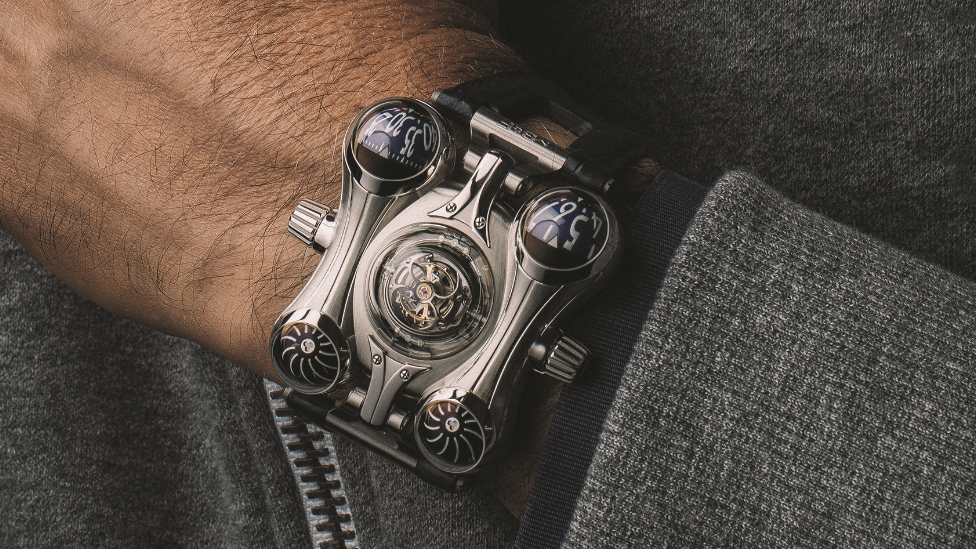Smartwatches: Switzerland's friend or foe?
- Published
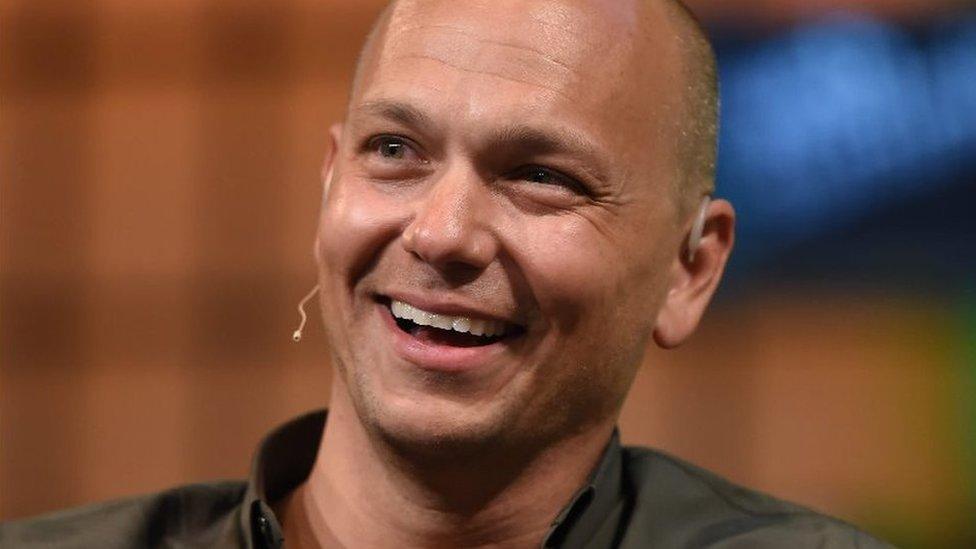
Former Apple executive Tony Fadell says the Swiss watch industry must adapt to a digital world
There are people at Geneva's annual watch show who would probably prefer to have an arm lopped off than wrap a smartwatch around their wrist.
The Salon International de la Haute Horlogerie is where the fine art of Swiss watchmaking presents itself to the world; where hand-crafted timepieces sell for hundreds of thousands of pounds.
Not for them the soulless black Apple Watch. Yet even in the heart of watchmaking, there are signs that the digital world is encroaching.
For a start, former Apple engineer Tony Fadell is at the show. He is credited as being one of the fathers of the iPod, and went on to found Nest Labs, bought by Google in 2014 for $3.5bn (£2bn).
"The thing about the digital revolution is that it is touching everything, so to say it won't touch this [Swiss watch] world doesn't make sense," he says.
Hybrids
Several mechanical watch manufacturers are, in fact, experimenting with smart features in mechanical watches.
Tag Heuer created an Android hybrid watch, and put about $190,000 (£147,500) worth of diamonds on it.
Montblanc and Frederique Constant developed e-straps, putting digital functionality on the somewhat chunky buckle of the strap so that the watch itself keeps traditional looks.
Frederique Constant also has a self-winding watch with bluetooth tech and a rechargeable battery. But at £3,000, it's still very much a luxury watch rather than a smartwatch.

Ressence's solar-powered hybrid watch has smart tech but sells for a luxury price - $40,000-plus
Ressence, a Belgian company that manufactures its watches in Switzerland, has developed the E-Crown. A couple of taps on the watch glass and the bluetooth connectivity links with the company's iPhone app.
The creation may have been complicated. The watch is powered by tiny solar panels. But the functionality is limited to such basic things as changing the time and timezones. It's a long way off being able to track fitness or act as a payment platform.
Still, as Ressence founder Benoit Mintiens is quick to point out: "It's a first generation model and there will be a further merging of analogue and digital functions."
Ressence sells only about 300 watches a year, but it has some high-profile supporters.
The chief executive of Uber, Dara Khosrowshahi is a fan, Mr Mintiens says, as is the designer Philippe Starck. "They are genuine admirers. We are a small company and cannot pay for brand ambassadors," says Mr Mintiens.
Mr Fadell is now working with Ressence, and although he won't discuss any business or investment plans he's clearly interested in the market potential of hybrid watches. The future of smartwatches is as standalone devices, rather than tied to smartphones, he believes.
"It's really interesting to think about how these worlds might collide. There are the digital and code craftsmen that I'm used to, and mechanical craftsmen here in the watch industry. Both, in their areas, want to push the edges of what can be achieved," he says.
"You need people who are shaking things up, like Ressence. It doesn't matter if people are polarised by it. You just need to generate interest, and that leads to change."
Wrong approach?
The Swiss watch industry, still the country's third biggest export sector, had a near-death experience in the 1970s when the Japanese launched quartz watches.
Mr Fadell thinks there are lessons to be learned if the Swiss industry is not to be swept away by another tech revolution. For a start, he believes its approach to start-ups is wrong.
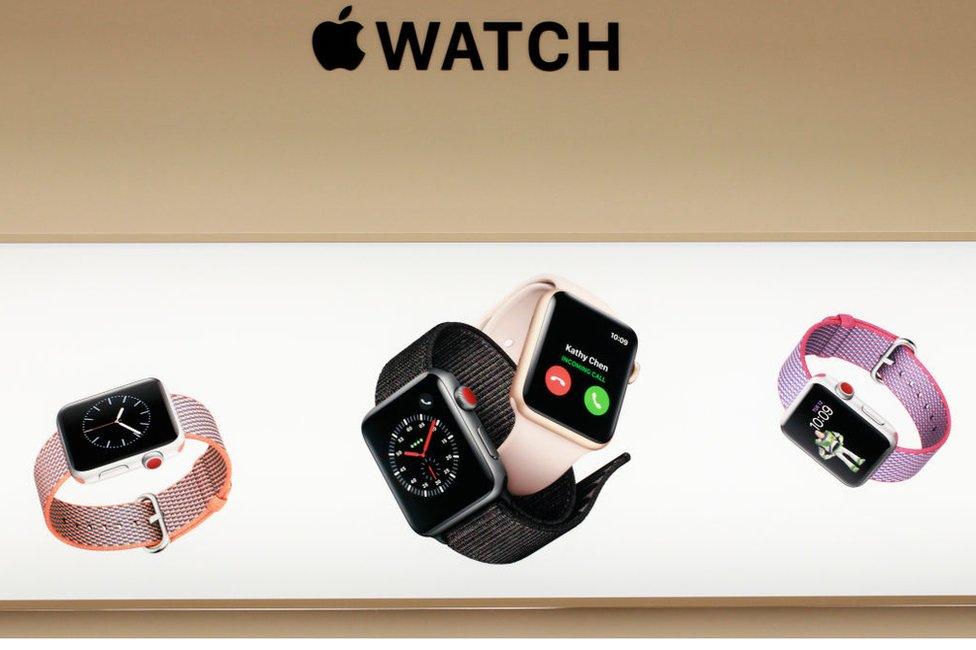
The Apple Watch threatens low-end Swiss watches
"The digital world understands that there are lots of start-ups with the potential for break-out products, so they support them a lot.
"Here it's: 'Prove to me why I should be selling you something. I don't want to waste my time with you.'"
In a report last month, investment bank Morgan Stanley warned that Switzerland's two biggest watch firms, Swatch Group and Richemont, face a significant smartwatch threat.
It's unlikely to affect their many high-end brands, such as Cartier, Breguet and Blancpain. But with the Apple Watch priced at about 450 Swiss francs (£356), the low-end products are vulnerable.
Indeed, there are signs of this in the latest figures from the Swiss industry's trade body. Exports of watches with a factory gate price of below 500 francs (£400) fell 15% in the 11 months to the end of November.
However, exports of watches above 3,000 francs were up 11% - a rise that has given comfort to the many premium brands.
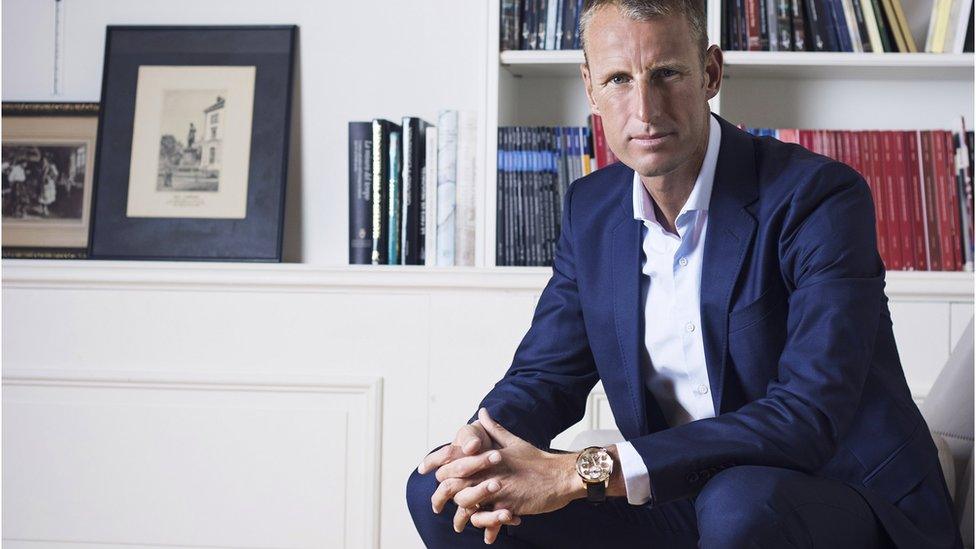
Patrick Pruniaux worked on the Apple Watch launch but is now back at a Swiss mechanical watchmaker
Another man who understands the digital threat is Patrick Pruniaux, but he is far less concerned.
Mr Pruniaux knows Apple from the inside, having left Tag Heuer in 2014 to join the team that launched the tech giant's smartwatch.
At the time, his move sparked talk of a Swiss brain drain to Silicon Valley. But Mr Pruniaux is now back, running the luxury watchmakers Girard-Perregaux and Ulysse Nardin.
'No emotion'
Would he consider putting smart tech in his mechanical watches? "I'd have to start by asking what is in it for our customers." The answer is, not much.
He doesn't criticise his competitors for experimenting with connectivity. But just as some high-end complex watches are created just for the sake of it, so some hybrid watches are being produced for the same reason.
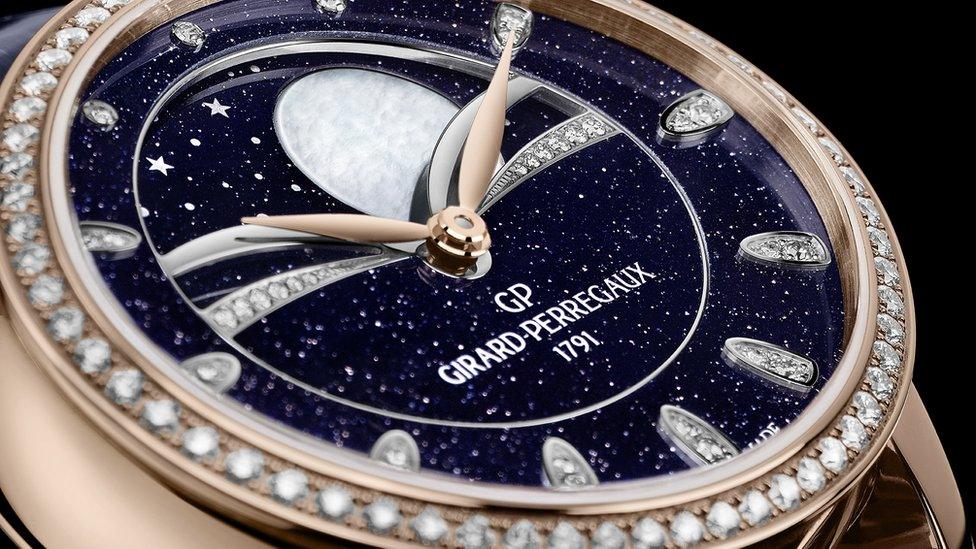
The smartwatch will never generate the emotion of a mechanical timepiece, say Swiss executives
"There's no emotion with a smartwatch," he says. "A good watch does not go out of date. People who buy our watches do so for the passion and for the creativity." A smartwatch just performs a function.
That said, smartwatches are a big opportunity for the Swiss industry, Mr Pruniaux says. Young people and millennials are now wearing, and talking about, watches again.
"That gives us a potential new market, to go out and explain ourselves and tell them why we offer a better value proposition," he says. He also thinks we may be entering an era where people want to occasionally disconnect from the world.
However, where the Swiss industry must learn the lessons of Silicon Valley is its approach to the customer.
"I see some [mechanical] watches and wonder if the customer was an afterthought. For Apple the product is only the tip of the iceberg. They offer a full customer experience," he says.
"If something goes wrong with a £100,000 mechanical watch it might take months to repair," Mr Pruniaux says. That's an example where things must change.
To adapt, the Swiss industry should worry less about smart tech, and more about the end consumer, he says.
- Published15 January 2019
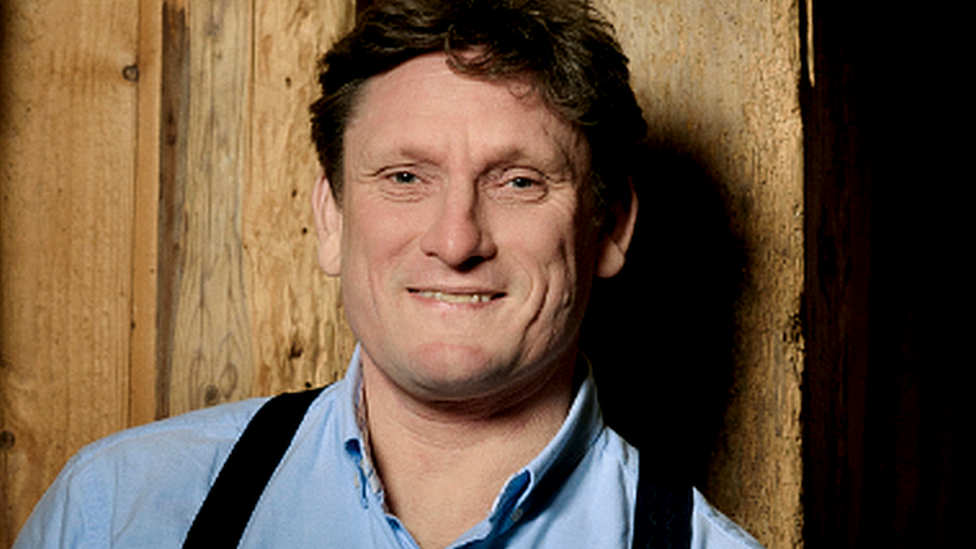
- Published13 January 2019
